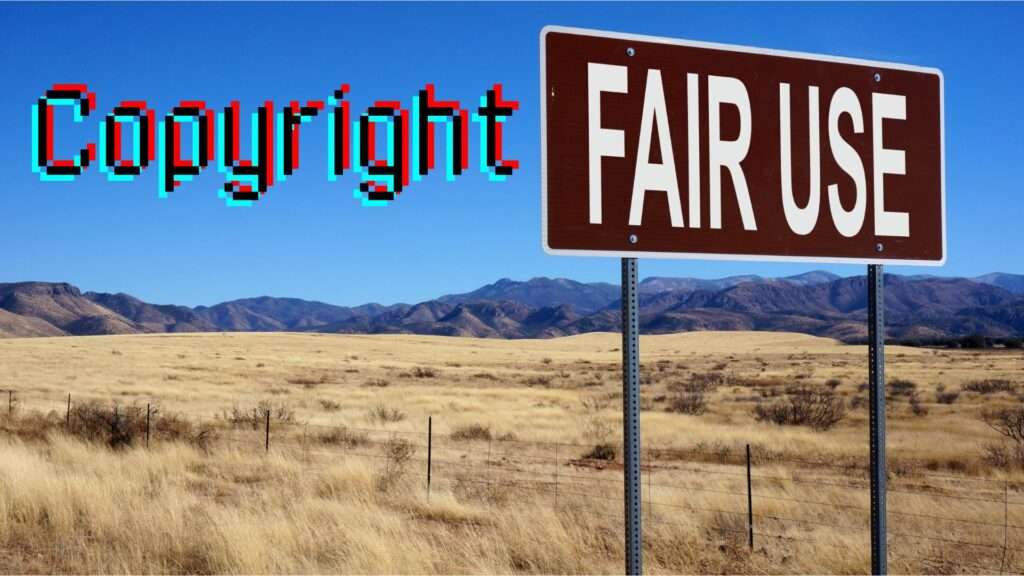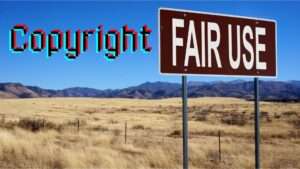In the digital age, where content creation and consumption are ubiquitous, understanding the Copyright Fair Use Doctrine is crucial for both content creators and businesses. This doctrine, a vital part of copyright law, allows for the use of copyrighted material under certain conditions without the need for permission from, a license, or payment to the copyright holder. This blog post delves into the intricacies of the Fair Use Doctrine, offering clarity and guidance on how to navigate this complex but essential legal terrain.
What is the Fair Use Doctrine?
The Fair Use Doctrine is a legal principle under U.S. copyright law that permits limited use of copyrighted material without having to seek permission from the rights holders. This doctrine is particularly relevant in the realms of commentary, criticism, news reporting, teaching, scholarship, and research.
Summary of the 3 Most Important Copyright Fair Use Cases from the US Supreme Court
Understanding key Supreme Court cases can provide valuable insights into how the Fair Use Doctrine is applied in various contexts. Here are summaries of three landmark copyright fair use cases from the US Supreme Court:
1. Campbell v. Acuff-Rose Music, Inc. (1994)
Summary: This case involved the rap group 2 Live Crew’s parody of Roy Orbison’s song “Oh, Pretty Woman.” Acuff-Rose Music, Inc., the copyright holder, sued 2 Live Crew for copyright infringement. The Supreme Court ruled in favor of 2 Live Crew, emphasizing that parody can qualify as fair use even when it is for commercial purposes. The Court applied the four factors of fair use and found that the transformative nature of the parody outweighed the commercial aspect, and it did not significantly harm the market for the original work.
Key Takeaway: Parody, even when used commercially, can be considered fair use if it transforms the original work and does not significantly impact its market value.
2. Harper & Row, Publishers, Inc. v. Nation Enterprises (1985)
Summary: In this case, The Nation magazine published excerpts from Gerald Ford’s unpublished memoir, which was under contract with Harper & Row. The Supreme Court ruled against The Nation, stating that the use was not fair use. The Court highlighted that the unpublished nature of the work, the substantiality of the portion used (the “heart” of the memoir), and the impact on the market (scooping the publication) weighed against fair use.
Key Takeaway: The use of unpublished works, especially when it involves the most important parts of the work and affects its market, is less likely to be considered fair use.
3. Sony Corp. of America v. Universal City Studios, Inc. (1984)
Summary: This case, often referred to as the “Betamax case,” involved Sony’s Betamax video tape recorders (VTRs) and their use for recording television programs for later viewing (time-shifting). Universal City Studios sued Sony, claiming that the VTRs enabled copyright infringement. The Supreme Court ruled in favor of Sony, holding that time-shifting for private, non-commercial use constituted fair use. The decision was significant in establishing that certain non-commercial, personal uses of copyrighted material can be fair use.
Key Takeaway: Non-commercial, personal use of copyrighted material, such as recording TV shows for later viewing, can be considered fair use.
These landmark cases illustrate how the Fair Use Doctrine is applied in different contexts, balancing the interests of copyright holders with the public’s right to use copyrighted material under specific conditions. For expert legal advice on navigating the complexities of copyright fair use, contact David Nima Sharifi, Esq. at L.A. Tech and Media Law Firm
Understanding the Four Factors of Fair Use
The application of the Fair Use Doctrine is not black and white but rather depends on a case-by-case analysis based on four factors:
- The Purpose and Character of the Use
- This factor considers whether the use is of a commercial nature or for nonprofit educational purposes. Transformative use – where the original work is used to create something new, often with a different purpose or character – tends to favor fair use.
- The Nature of the Copyrighted Work
- The use of factual or non-fictional works is more likely to be considered fair use compared to creative works like music, novels, or films.
- The Amount and Substantiality of the Portion Used
- Using a small, less significant portion of the copyrighted work may favor fair use. However, even a small portion can be too much if it’s considered the ‘heart’ of the work.
- The Effect of the Use on the Potential Market
- If the use of the material has a negative impact on the original work’s market or potential market, it’s less likely to be seen as fair use.
 Fair Use in Practice: Real-World Applications
Fair Use in Practice: Real-World Applications
Fair use plays a critical role in various sectors:
- Education: Teachers and students often rely on fair use for classroom materials and assignments.
- Journalism: Reporters may use excerpts from copyrighted works for news reporting and commentary.
- Entertainment: Parodies and satires, which comment on or critique original works, often fall under fair use.
- Research and Scholarship: Scholars frequently use small portions of works for criticism, comment, and academic research.
Common Misconceptions about Fair Use
There are several misconceptions about what constitutes fair use:
- Not Everything is Fair Use: Just because a work is available online doesn’t mean it’s free to use under the fair use doctrine.
- Fair Use is Not Just About Quantity: It’s not just about how much you use but how you use it.
- Commercial Use Can Be Fair Use: While commercial use makes a fair use claim harder, it doesn’t make it impossible.
Best Practices for Relying on Fair Use
To responsibly rely on the Fair Use Doctrine:
- Evaluate Your Use Against the Four Factors: Always consider how your use aligns with the four factors of fair use.
- Seek Legal Advice When in Doubt: If you’re unsure, it’s wise to consult with a legal expert.
- Be Prepared to Defend Your Use: Understand that your interpretation of fair use might be challenged, and be prepared to justify your use based on the doctrine.
The Fair Use Doctrine is a critical element of copyright law, offering flexibility and freedom for creativity and innovation. However, navigating the nuances of fair use requires a careful and informed approach. By understanding and respecting the boundaries of this doctrine, content creators and businesses can make informed decisions about using copyrighted material, fostering an environment where creativity and intellectual property rights coexist harmoniously.
Consult with a Copyright and Fair Use Expert
Navigating the complexities of the Fair Use Doctrine can be as challenging as it is critical, especially in today’s fast-paced digital landscape. Whether you’re a content creator, educator, journalist, or business owner, understanding the subtleties of fair use is key to leveraging content responsibly and creatively.
If you’re seeking clarity or guidance on how to apply the Fair Use Doctrine to your work, or if you’re facing challenges related to copyright and new media, it’s time to turn to an expert. David Nima Sharifi, Esq., with his extensive experience in copyright and new media law, is perfectly positioned to provide you with the insights and legal advice you need.
Call to Action: Contact Copyright Attorney David Nima Sharifi, Esq. today to ensure that your use of copyrighted material is not just innovative but also legally sound. A consultation with David can illuminate the path forward, helping you make informed decisions that align with legal best practices while supporting your creative and business goals.
In conclusion, the Fair Use Doctrine is a vital aspect of copyright law that provides necessary flexibility for creativity and innovation. Understanding and applying this doctrine correctly can protect you from legal pitfalls and support your content creation efforts. For expert legal advice and assistance, reach out to David Nima Sharifi, Esq. at L.A. Tech and Media Law Firm.


 Fair Use in Practice: Real-World Applications
Fair Use in Practice: Real-World Applications